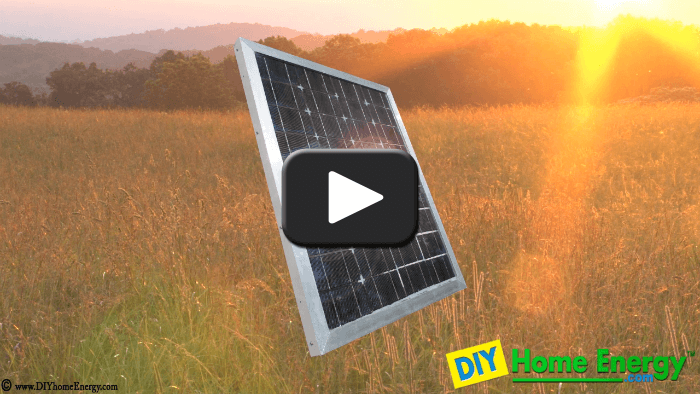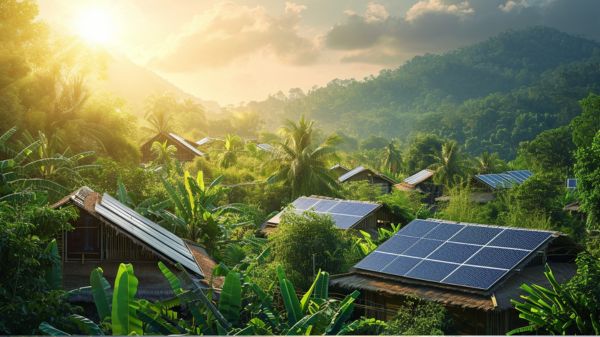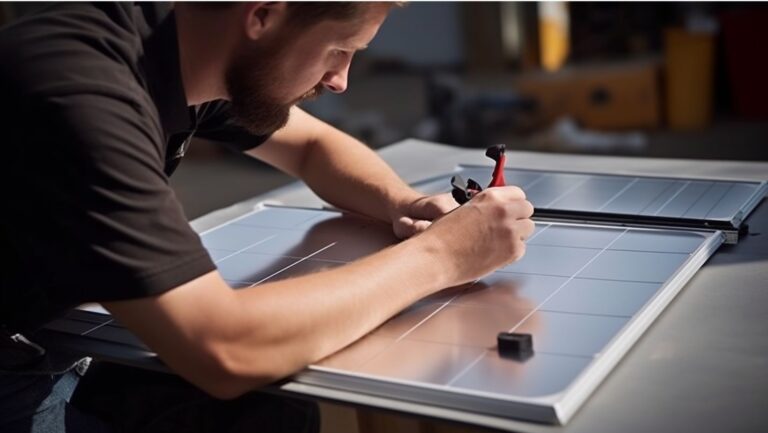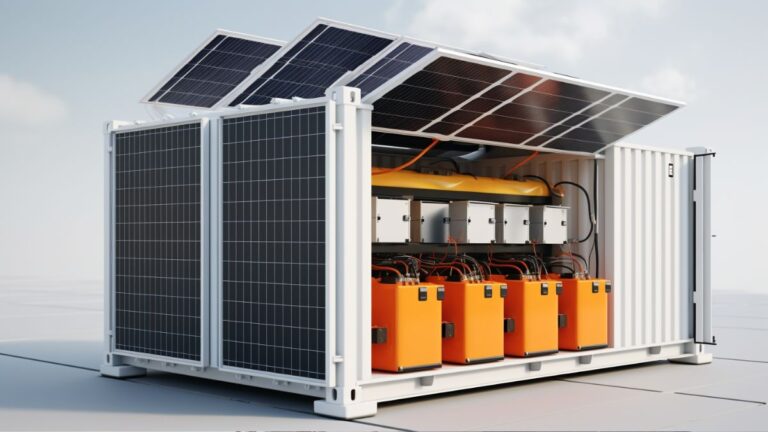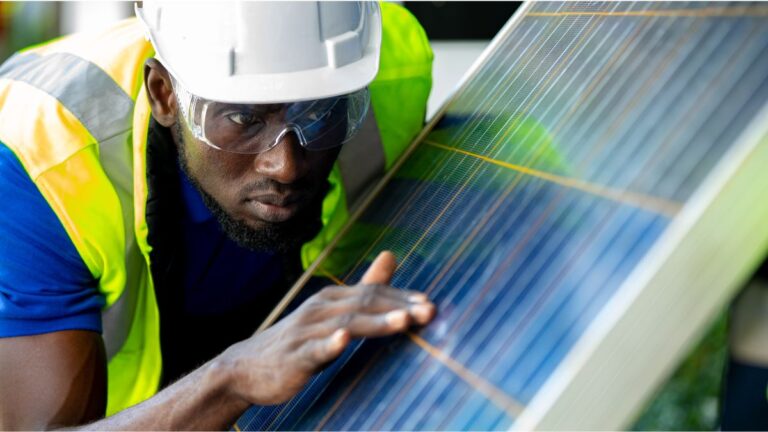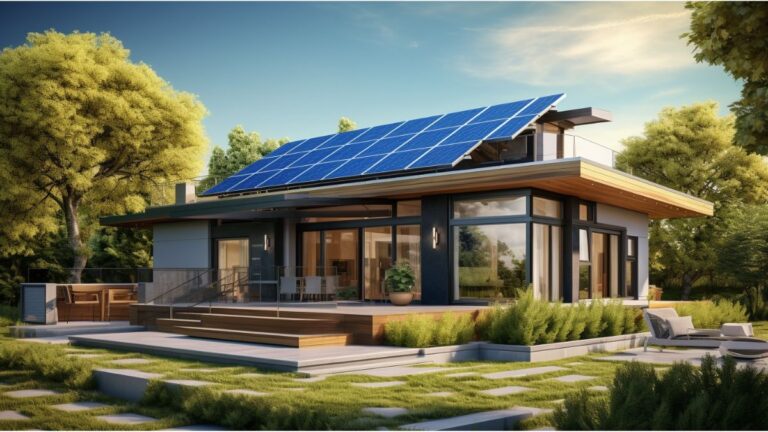How To Build An Off Grid Solar System: Break Free from the Grid
Dream of harnessing the sun’s power to create your own off-grid solar system? Learn how to build an off grid solar system! In this article we’ll guide you through the step-by-step process, from selecting the right components to calculating your energy needs and installing everything for maximum efficiency.
Whether you want to reduce your carbon footprint, become self-sufficient, or save money, building an off-grid solar system is a rewarding endeavor. Join us on this journey and discover the world of off-grid solar power together!
Key Points
- Solar panels, inverters, batteries, and charge controllers are key components of an off-grid solar system.
- The design and installation process includes load calculation, system sizing, battery and charge controller installation, inverter installation, and solar panel installation.
- Load calculation involves listing electrical appliances and calculating battery capacity and solar panel size based on energy usage and average sunshine hours.
- Installing batteries and charge controllers involves connecting batteries in series or parallel, choosing an MPPT charge controller, and selecting the correct current and voltage ratings.
Comparing Different Types of Solar Panels
The first component you need to understand regarding how to build an off grid solar system is solar panel. When comparing different types of solar panels, you should consider the efficiency and cost of each option.
The efficiency of a solar panel refers to its ability to convert sunlight into electricity. Higher efficiency panels can generate more electricity from the same amount of sunlight, making them a better choice for off-grid solar systems. However, these panels tend to be more expensive.
On the other hand, lower efficiency panels are cheaper but may require more space to generate the same amount of electricity. When building an off-grid solar system, it’s important to find a balance between efficiency and cost, taking into account your specific energy needs and budget.

Load Calculation and System Sizing
To properly size your off-grid solar system, you need to accurately calculate your energy requirements and determine the appropriate component quantities. This process, known as load calculation and system sizing, is crucial in building an efficient off-grid solar power system. Here are five key steps to consider:
- List all your electrical appliances and their power consumption.
- Calculate the battery capacity needed based on your energy usage during dark hours.
- Determine the solar panel size required based on the average daily sunshine hours in your location.
- Utilize online calculators or seek guidance from solar power companies for accurate load analysis.
- Remember to include safety margins and consider estimated savings in your system design.
Installing the Batteries and Charge Controller
Make sure you purchase and install the batteries and charge controller as the first step in building your off-grid solar system. The batteries are essential for storing electrical energy for use when the sun isn’t shining, while the charge controller controls and monitors the flow of current for efficient charging.
When installing the batteries, you can connect them in series or parallel based on the system voltage. It’s important to choose an MPPT charge controller for higher efficiency. Calculate the charge controller current rating based on the solar panel current, and select the correct voltage rating for the charge controller.
Related Post: The Best Off-Grid Solar System Packages With Batteries 2023.
Installing the Inverter and Solar Panels
You should regularly check the voltage rating and proper orientation of the solar panels when installing them along with the inverter. This ensures optimal performance and efficiency of your off-grid solar system. Here are some key points to consider:
- Select an inverter with a voltage rating compatible with your system.
- Install solar panels based on their voltage rating and proper orientation.
- Ensure that the panels are facing the sun and are installed in a shade-free area.
- Use an inverter to convert the electricity generated by the panels into usable AC form.
- Choose an inverter slightly larger than the calculated system size to accommodate future expansions.
Installing the Electrical Wiring
Start by carefully planning and mapping out the installation route for the electrical wiring in your off-grid solar system. Proper installation of the electrical wiring is crucial for the efficient functioning of your system. Here’s how to do it:
- Determine the location of your solar panels, batteries, and inverter. This will help you plan the route for the wiring.
- Calculate the wire length required based on the distance between the components. Use appropriate wire gauge based on the current and voltage requirements.
- Ensure that the wiring is properly insulated and protected from weather conditions, pests, and physical damage.
- Connect the positive and negative terminals of the components using appropriate connectors and terminals.
- Label the wiring to identify each connection and make troubleshooting easier in the future.
Remember to follow all local electrical codes and regulations during the installation process.
Monitoring and Adjusting the Solar System
To effectively monitor and adjust the solar system, regularly check the performance of the solar panels and batteries, as well as make necessary adjustments to maximize efficiency. Monitoring and adjusting an off-grid solar system is crucial to ensure optimal performance and longevity. Here are five key steps to consider:
- Conduct regular inspections of solar panels to check for any damage or signs of wear.
- Monitor the battery voltage and charge levels to prevent overcharging or deep discharging.
- Analyze the energy production and consumption data to identify any discrepancies or inefficiencies.
- Adjust the position and angle of the solar panels to maximize exposure to sunlight throughout the day.
- Regularly clean the solar panels to remove any dirt, dust, or debris that may hinder their performance.
System Maintenance and Troubleshooting
Make sure to regularly inspect and clean your solar panels to prevent any potential issues with system maintenance and troubleshooting. Keeping your off-grid solar system well-maintained is crucial for optimal performance and longevity.
Begin by visually inspecting the panels for any signs of damage, such as cracks or loose connections. Clean the panels regularly to remove dust, dirt, and debris that can reduce their efficiency. Use a soft cloth or sponge with a mild detergent and water to gently clean the surface. Avoid using abrasive materials or harsh chemicals that can damage the panels.
Additionally, regularly check the battery connections, charge controller, and inverter for any loose wires or signs of corrosion. Conducting routine inspections and performing necessary maintenance will ensure that your off-grid solar system operates smoothly and troubleshoot any potential issues promptly.
Legal Considerations for Installing an Off-Grid Solar System
Ensure that you familiarize yourself with the legal requirements and regulations before installing an off-grid solar system. Here are some important legal considerations to keep in mind when installing an off-grid solar system:
- Obtain permits and permissions: Research and comply with local building codes and regulations regarding solar installations.
- Interconnection agreements: Check if there are any agreements or contracts required for connecting your system to the grid.
- Licensing and certifications: Ensure that you hire licensed and certified professionals for the installation to meet safety and quality standards.
- Insurance coverage: Review your homeowner’s insurance policy to determine if additional coverage is needed for your solar system.
- Utility regulations: Understand any utility regulations that may affect your off-grid solar system, such as net metering or feed-in tariff programs.
Related Post: DIY Off-Grid Solar System: Ultimate Guide To Power Your Paradise.
Financial Incentives for Solar Power
Have you considered the financial incentives and benefits of investing in solar power?
When it comes to off-grid solar system packages with batteries, there are a few options to consider. Many companies offer packages that include solar panels, batteries, and other necessary components. These packages can be a cost-effective solution for those looking to go off-grid.
In addition to the savings on electricity bills, there are financial incentives for solar power. Some governments offer tax credits and rebates for installing solar power systems. These incentives can help offset the initial cost of the system and provide long-term savings.
It’s important to research and compare different off-grid solar system packages with batteries to find the best option for your needs and budget.
Benefits of an Off-Grid Solar Power System
Why you should learn how to build an off grid solar system? Well, you can greatly reduce your dependence on the grid by regularly utilizing an off-grid solar power system. And there’s a lot of other benefits of an off grid solar system too.
Here are the benefits of an off-grid solar power system:
- Energy independence: With an off-grid solar power system, you can generate your own electricity, allowing you to be self-sufficient and not rely on the grid.
- Cost savings: By harnessing the power of the sun, you can significantly reduce or eliminate your monthly electricity bills.
- Environmental sustainability: Solar power is a clean and renewable energy source, reducing your carbon footprint and contributing to a healthier planet.
- Reliability: Off-grid solar systems typically include battery storage, ensuring a continuous power supply even during grid outages.
- Remote accessibility: Off-grid solar systems are ideal for remote locations where connecting to the grid isn’t feasible or cost-effective.
When considering the best off-grid solar system for your needs, it’s important to assess your energy requirements, solar panel efficiency, battery capacity, and system sizing. Consulting with solar power experts can help you design and install the most efficient and effective off-grid solar system for your specific situation.
Final Thought
Building an off-grid solar power system can be a rewarding and environmentally friendly endeavor. While the initial setup may require some technical knowledge and planning, the benefits are numerous.
By harnessing the power of the sun, you can reduce your carbon footprint, become more self-sufficient, and save money on your electricity bills.
Although some may argue that the upfront costs can be a deterrent, the long-term savings and positive impact on the environment make it a worthwhile investment. Learn how to build an off grid solar system, start your off-grid solar journey today and take control of your energy future.
Watch the following video below to learn how to build an off grid solar system the right way!

